Goal 12.2 : By 2030, achieve the sustainable management and efficient use of natural resources.
AQC ACTION
The annual supply chain mapping of leather sourcing by AQC members provides visibility and traceability of the leathers used.
Bovine leather
For bovine leather, 87% of slaughter countries and 62% of breeding countries have now been identified. They are mainly located in Europe. Bovine leather, as a co-product of the agri-food industry, presents challenges in mapping the supply chain. AQC is working in collaboration with all sector stakeholders to enhance traceability of hides.
If hides are not processed into leather, they end up in landfill and generate greenhouse gases. Each year, up to 40% of bovine hides– amounting to 134 million – are thus wasted worldwide.
To know more click here
Alligator leather
The mapping of the alligator leather supply chain is facilitated both by its transparency and the CITES tag.
The hides of Alligator mississippiensis, which represent more than 98% of the exotic skins delivered to AQC members, all come from audited or certified farms located in the southeastern United States, primarily in Louisiana. In that state, approximately 3,000,000 alligators live, more than 3,000,000 of which live in the wild3,000,000 of which live in the wild, in wetland areas.
Alligators reproduce solely in their natural habitat. The collection of their eggs is regulated by the Louisiana Department of Wildlife and Fisheries, which issues annually reassessed regulations based on population demographics. This is an essential conservation effort for the preservation of this natural resource, which is not only valued for its skin but also for its meat, sold in supermarkets. Moreover, the pharmaceutical industry makes use of various parts of the animal post-slaughter, including the bones.
85% percent of Louisiana’s wetlands are privately owned. Hurricanes cause erosion and hydrological disruptions, threatening these habitats. The sale of eggs enables landowners to maintain and restore the bayous. In addition, alligator farmers—who rely on the health of these ecosystems—are actively involved in their restoration, either independently or in collaboration with conservation organisations.
Wetlands are also among the world’s most effective ecosystems for carbon storage.
To know more click here
Goal 12.4: By 2020, achieve the environmentally sound management of chemicals and all wastes throughout their life cycle, in accordance with agreed international frameworks, and significantly reduce their release to air, water and soil in order to minimise their adverse impacts on human health and the environment.
AQC ACTION
AQC is committed to facilitating its members’ compliance with existing and upcoming chemical regulations, such as REACH. A regular testing programme (AQC Chemical Testing Scheme) has been established, and over a period of ten years, nearly 100,000 test results on finished bracelets and their components have been obtained. This initiative includes the monitoring of more than 200 suppliers of leather bracelet components.
For several years, the AQC has been promoting chemical compliance at an international level during multistakeholder meetings (bringing together leather bracelet manufacturers, watch brands, tanneries, farmers, chemical suppliers, associations, and commercial intermediaries).
As a reference tool for chemical substances, AQC recommends that all its partners comply with the manufacturing Restricted Substances List published by the Zero Discharge of Hazardous Chemicals programme (ZDHC).
In alignment with the Partnership for the Goals, and in order to ensure the chemical compliance of materials, the technical working group of AQC defines and regularly updates the lists of regulated chemical substances (RSL). Quality control is carried out by several laboratories referenced by the association, using selected and standardised analytical methods.
Proactive and preparatory actions in anticipation of new regulations are initiated and shared with the relevant stakeholders.
Goal 12.5: By 2030, substantially reduce waste generation through prevention, reduction, recycling and reuse.
AQC ACTION
Through its certification, AQC raises awareness among its members about implementing waste management and circularity in production.
At the beginning of 2023, AQC also committed to conducting a life cycle analysis (LCA) of the bracelets, with the aim of improving their environmental impact. By 2025, this analysis has been completed and is undergoing a sectoral review; the results will be published at the end of the year.



